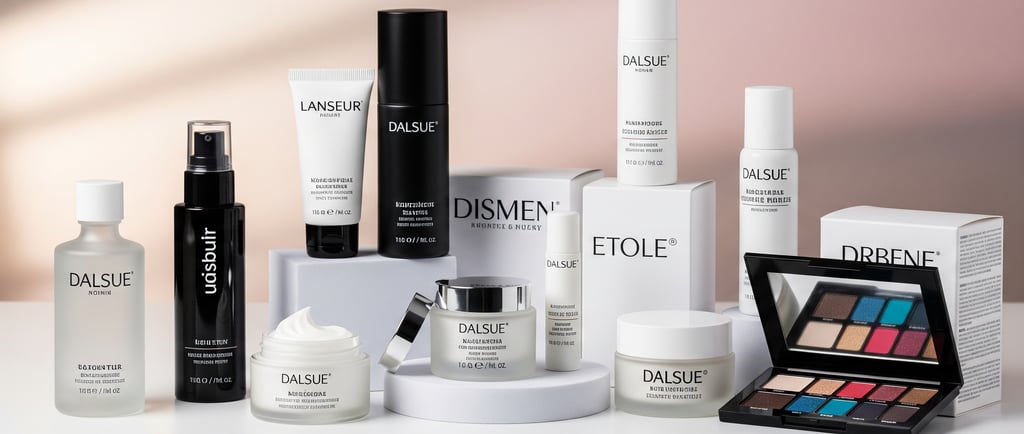A Unit of Private Label, Third-Party Manufacturing Services of Skincare/Cosmetic/Derma/Nutraceutical Products in INDIA
How to launch Own Skincare Brand in India
A Guide to Private Labeling in India (and Understanding Profitability)
Admin
8/21/20254 min read


Dreaming of launching your own skincare brand without the hefty investment and complexities of in-house manufacturing? Private labeling could be your perfect entry point into the booming Indian beauty market. This guide will walk you through the steps to start a private labeled skincare business in India and shed light on the potential for profit.
What is Private Labeling?
In simple terms, private labeling involves partnering with an existing skincare manufacturer to produce products that you then brand and sell under your own label. You essentially leverage their formulations, production facilities, and expertise, allowing you to focus on building your brand, marketing, and sales.
Step-by-Step Guide to Starting Your Private Label Skincare Business in India:
1. Define Your Niche and Target Audience:
Just like any business, success starts with understanding your market.
Identify a need: What specific skincare concerns aren't being adequately addressed? Are there any emerging trends you can capitalize on (e.g., natural/organic, specific skin types, men's grooming)?
Pinpoint your target audience: Who are you trying to reach? Consider their age, income, lifestyle, skin concerns, and where they shop. This will influence your product choices, branding, and pricing.
Research the competition: Analyze existing private label brands and their offerings. What are their strengths and weaknesses? How can you differentiate yourself?
2. Develop Your Brand Identity:
Your brand is more than just a logo; it's the personality of your business.
Choose a brand name and aesthetic: This should resonate with your target audience and reflect your brand values.
Create a compelling brand story: What's the "why" behind your brand? A strong story can build emotional connections with customers.
Design your logo and packaging: Invest in professional design that is visually appealing, reflects your brand, and adheres to Indian labeling regulations.
3. Find the Right Private Label Manufacturer in India (or Globally):
This is a crucial step that will significantly impact the quality and success of your products.
Research extensively: Look for manufacturers in India (especially given your location in Nanded, Maharashtra, consider local options first for easier communication and potential cost benefits, while also exploring national players) and even internationally. Use online directories, attend industry events, and ask for recommendations.
Consider their expertise and certifications: Do they specialize in the type of products you want to offer? Are they GMP (Good Manufacturing Practices) certified, ensuring quality and safety standards?
Request samples: Always test the manufacturer's existing formulations to ensure they meet your quality expectations.
Discuss customization options: Can they adapt their existing formulas or create new ones based on your specifications?
Inquire about minimum order quantities (MOQs) and pricing: Ensure their terms align with your budget and business goals.
Visit their facility (if possible): This can give you firsthand insight into their operations and quality control processes.
4. Select Your Products:
Based on your niche and manufacturer's offerings, choose the initial products for your line. Start with a focused range rather than trying to offer everything at once. Consider:
Best-selling product categories: What are consumers actively searching for?
Your brand's unique selling proposition: What specific needs can your products address?
Market trends: Are there any ingredients or product formats that are currently popular?
5. Design Your Packaging and Labeling:
Your packaging is the first physical interaction customers have with your brand.
Compliance with Indian regulations: Ensure your labels clearly list all ingredients, manufacturing date, expiry date, net weight, manufacturer details, and any necessary warnings as per the Cosmetics Rules, 2020.
Visual appeal: Create packaging that is attractive, functional, and reflects your brand identity.
Consider sustainability: Eco-friendly packaging is increasingly important to consumers.
6. Marketing and Sales Strategy:
How will you get your products into the hands of your customers?
Build an online presence: Create a professional website and engaging social media profiles (Instagram, Facebook, etc.).
Content marketing: Share valuable skincare tips, product information, and behind-the-scenes content through blog posts, videos, and social media.
E-commerce platforms: Sell directly to consumers through your website or popular Indian e-commerce marketplaces.
Consider offline channels: Explore opportunities to partner with local beauty stores, salons, or participate in pop-up shops (especially relevant in your region of Maharashtra).
Influencer marketing: Collaborate with beauty influencers who resonate with your target audience.
Paid advertising: Utilize online advertising platforms to reach a wider audience.
Understanding Profitability in a Private Label Skincare Business:
Profitability in a private label skincare business depends on several factors:
Cost of Goods Sold (COGS): This includes the cost of manufacturing the products, packaging, and raw materials. Negotiating favorable terms with your manufacturer is crucial. Higher order volumes can often lead to lower per-unit costs.
Pricing Strategy: Your pricing needs to cover your COGS, marketing expenses, operational costs, and leave a healthy profit margin. Consider competitor pricing, perceived value, and your target audience's willingness to pay.
Marketing and Sales Expenses: These can include website development, social media management, advertising, influencer collaborations, and sales commissions. Efficient marketing strategies are key to maximizing profitability.
Sales Volume: The more products you sell, the higher your overall profit will be. Effective marketing and a strong brand are essential for driving sales.
Operational Costs: These include things like shipping, customer service, and any administrative overhead.
Key Factors Influencing Profitability:
Negotiating favorable manufacturing costs: This directly impacts your COGS.
Effective branding and marketing: Creating a desirable brand allows you to command better pricing and drive higher sales volumes.
Efficient operations: Streamlining your processes can reduce overhead costs.
Building customer loyalty: Repeat customers are more profitable than constantly acquiring new ones.
Staying competitive: Continuously analyzing the market and adapting your product offerings and pricing is crucial.
